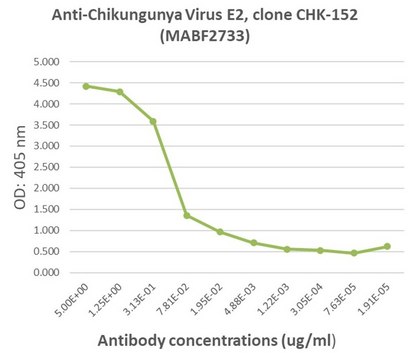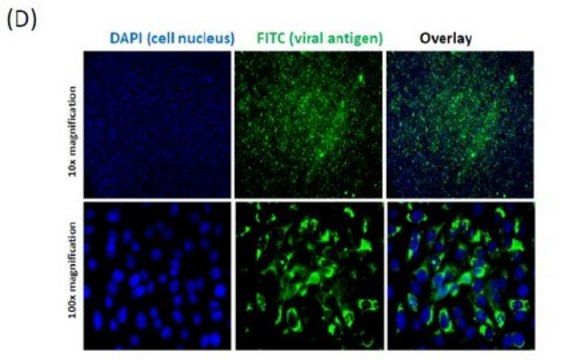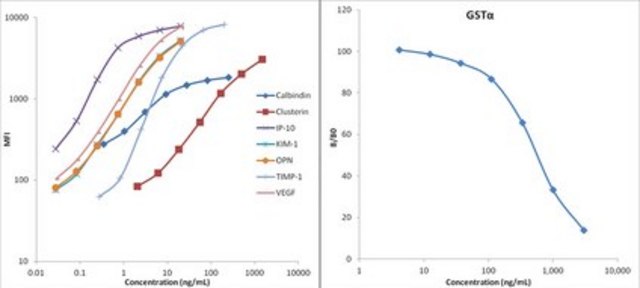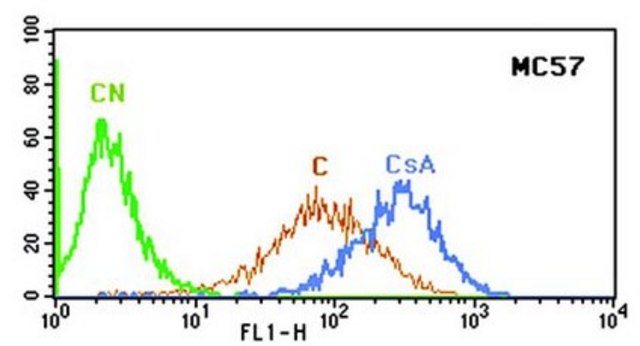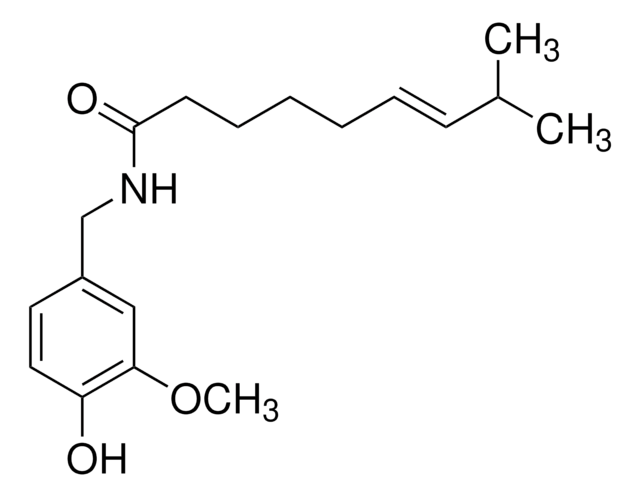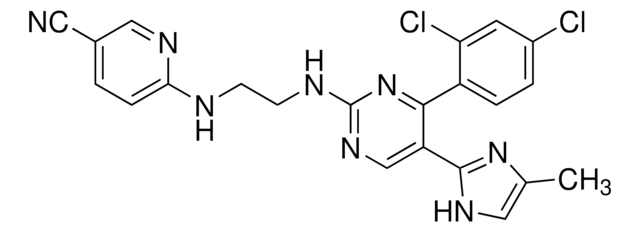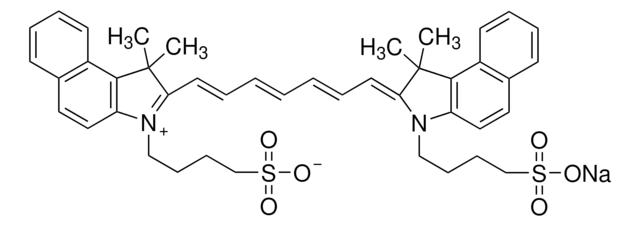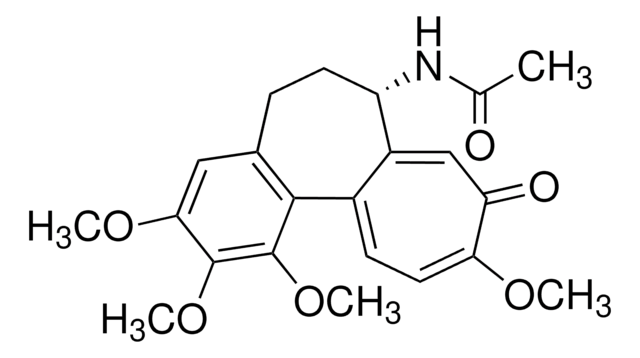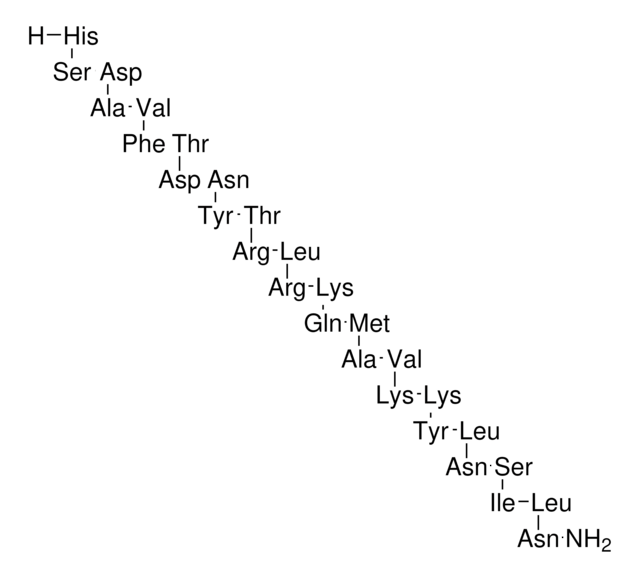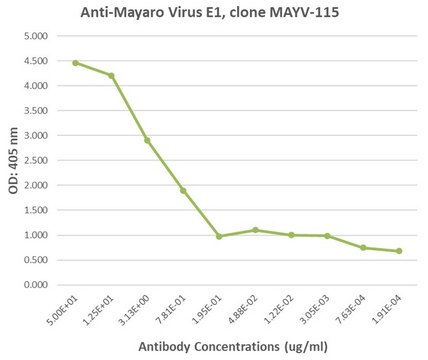MABF3035
Anti-Chikungunya virus E1 Antibody, clone CHK-166
About This Item
Recommended Products
biological source
mouse
Quality Level
conjugate
unconjugated
antibody form
purified antibody
antibody product type
primary antibodies
clone
CHK-166, monoclonal
mol wt
calculated mol wt 138.7 kDa
purified by
using protein G
species reactivity
virus
packaging
antibody small pack of 100 μL
technique(s)
ELISA: suitable
inhibition assay: suitable
neutralization: suitable
isotype
IgG2κ
epitope sequence
Unknown
UniProt accession no.
shipped in
dry ice
target post-translational modification
unmodified
General description
Specificity
Immunogen
Application
Evaluated by ELISA with recombinant Chikungunya Virus E1 protein.
ELISA Analysis: Various dilutions of this antibody detected recombinant Chikungunya virus E1 protein.
Tested Applications
Inhibition Analysis: A representative lot inhibited CHIKV infection when added after virus adsorption to the cell surface. (Pal, P., et al. (2013). PLoS Pathog. 9(4):e1003312).
ELISA Analysis: A representative lot detected Chikungunya virus E1 in ELISA applications (Zhang, R., et al. (2019). Cell Rep. 28(10): 2647-2658.e5).
Neutralizing Analysis: A representative lot neutralized CHIKV and protected immunocompromised mice against disease. (Pal, P., et al. (2013). PLoS Pathog. 9(4):e1003312).
Note: Actual optimal working dilutions must be determined by end user as specimens, and experimental conditions may vary with the end user
Physical form
Storage and Stability
Other Notes
Disclaimer
Not finding the right product?
Try our Product Selector Tool.
Storage Class Code
12 - Non Combustible Liquids
WGK
WGK 2
Flash Point(F)
Not applicable
Flash Point(C)
Not applicable
Regulatory Information
Certificates of Analysis (COA)
Search for Certificates of Analysis (COA) by entering the products Lot/Batch Number. Lot and Batch Numbers can be found on a product’s label following the words ‘Lot’ or ‘Batch’.
Already Own This Product?
Find documentation for the products that you have recently purchased in the Document Library.
Our team of scientists has experience in all areas of research including Life Science, Material Science, Chemical Synthesis, Chromatography, Analytical and many others.
Contact Technical Service